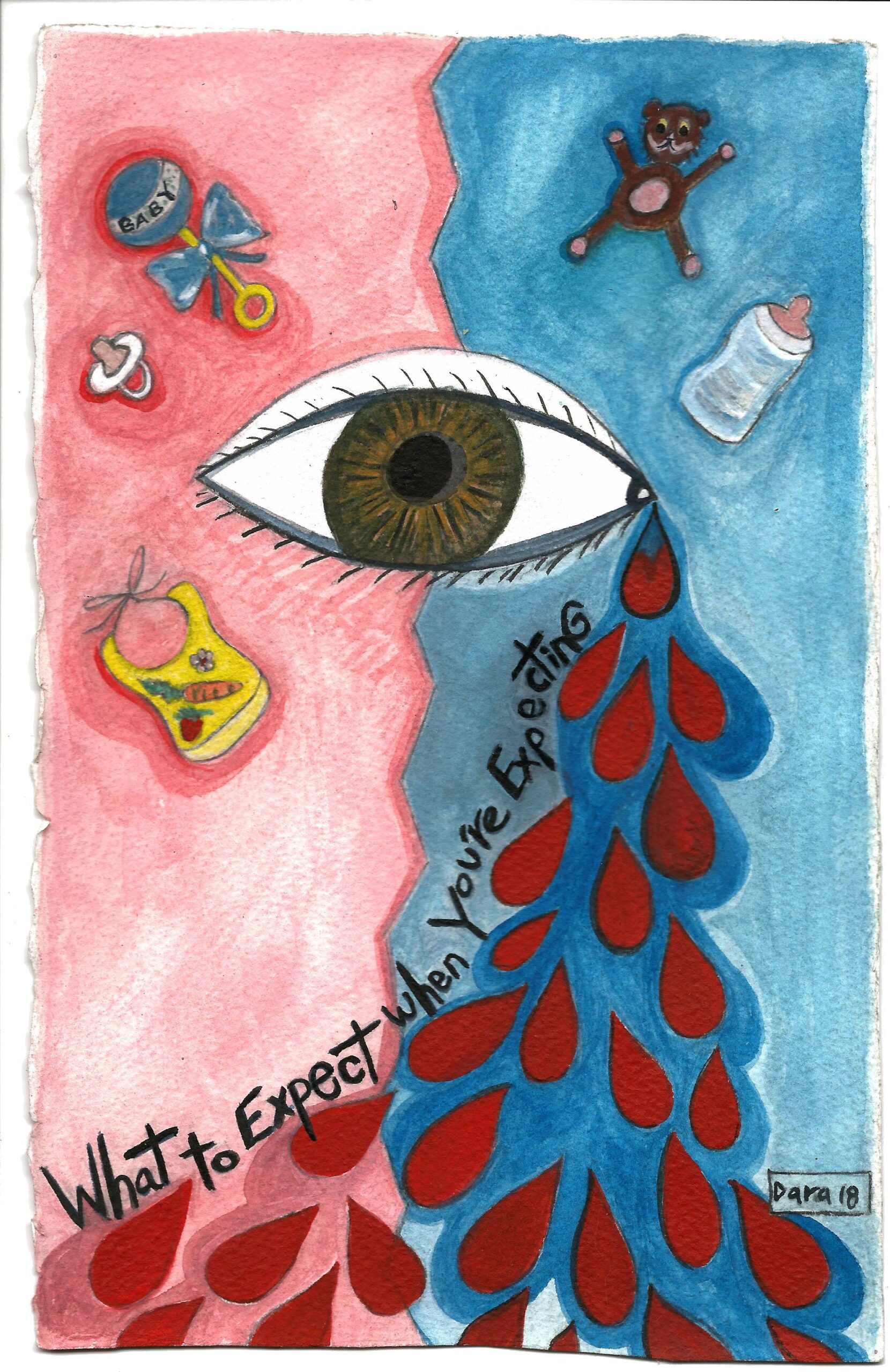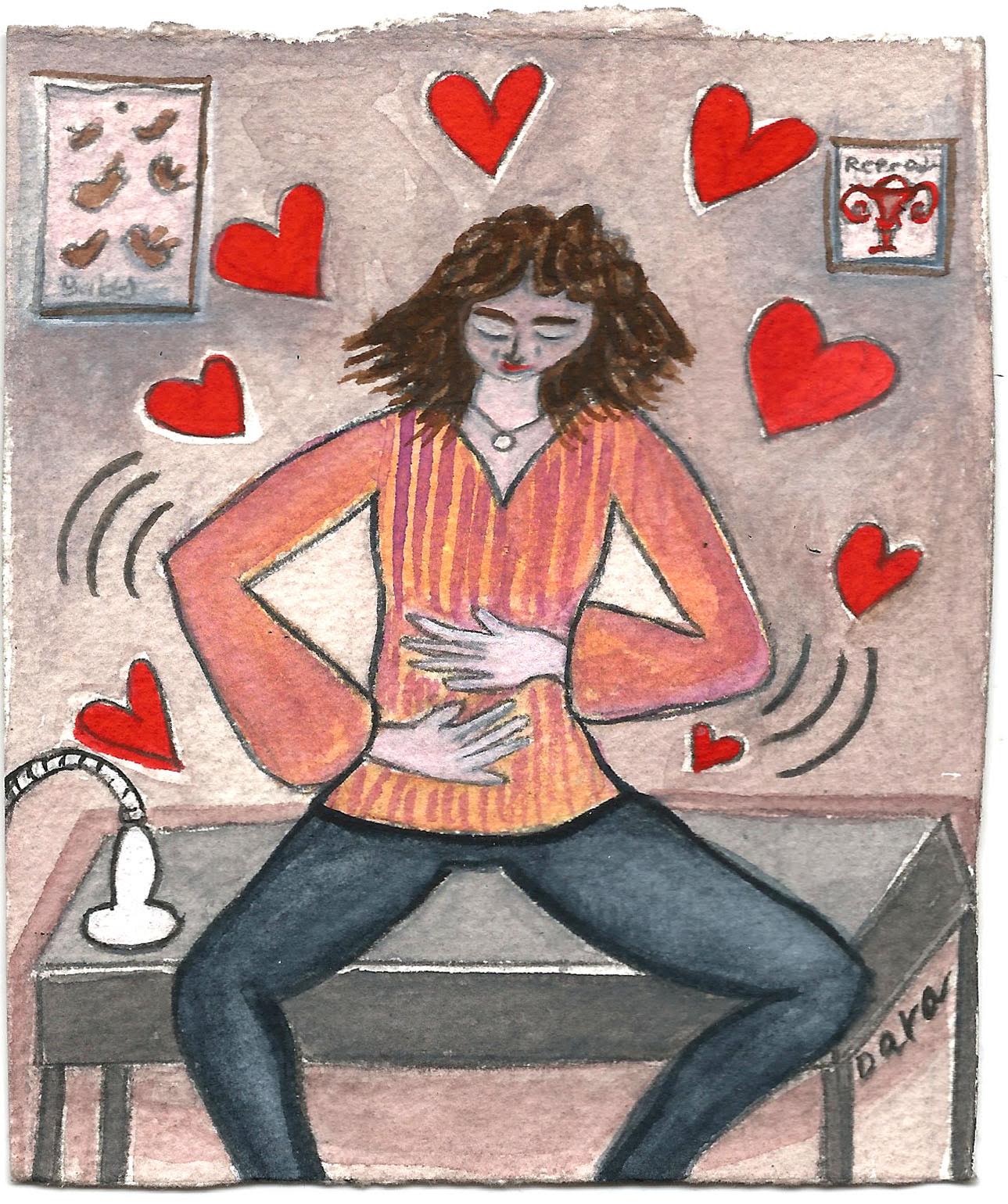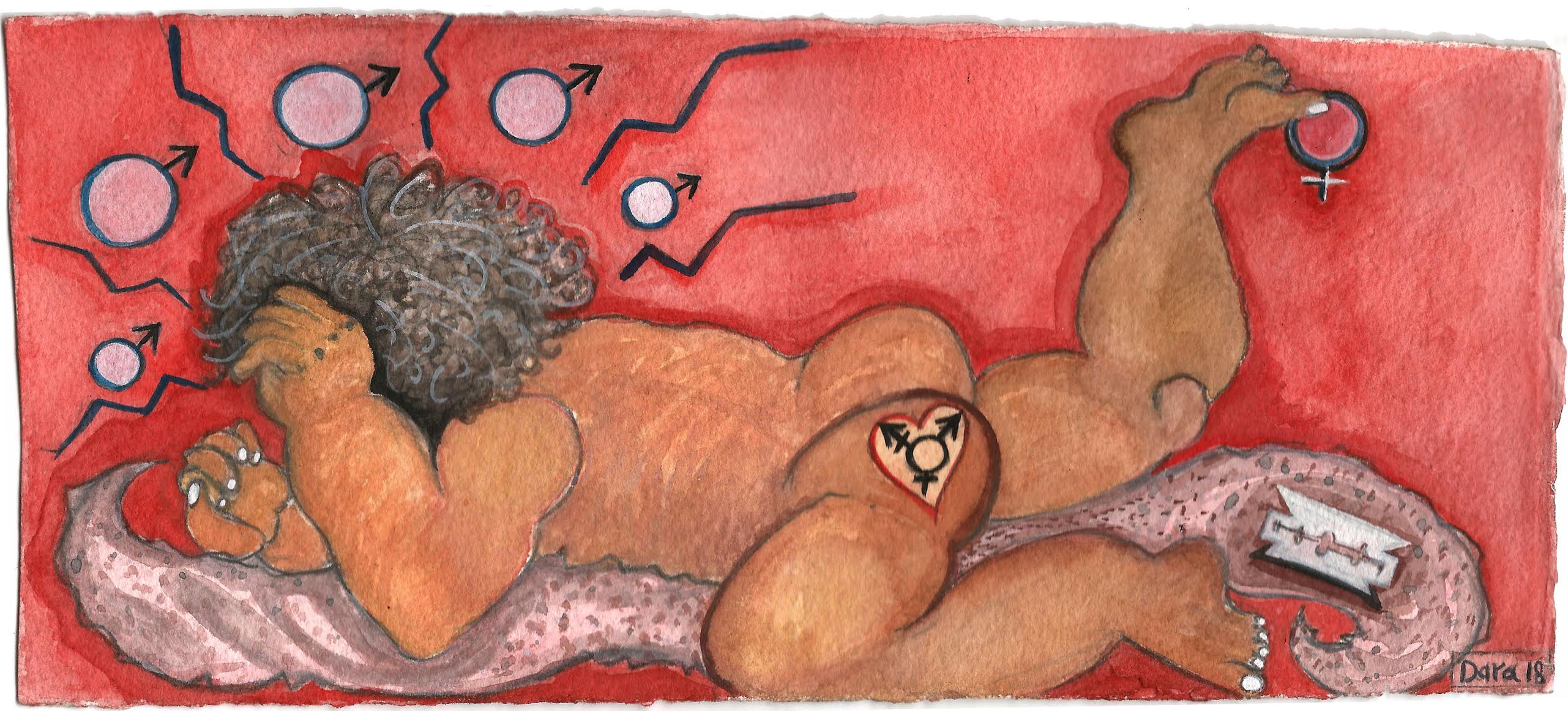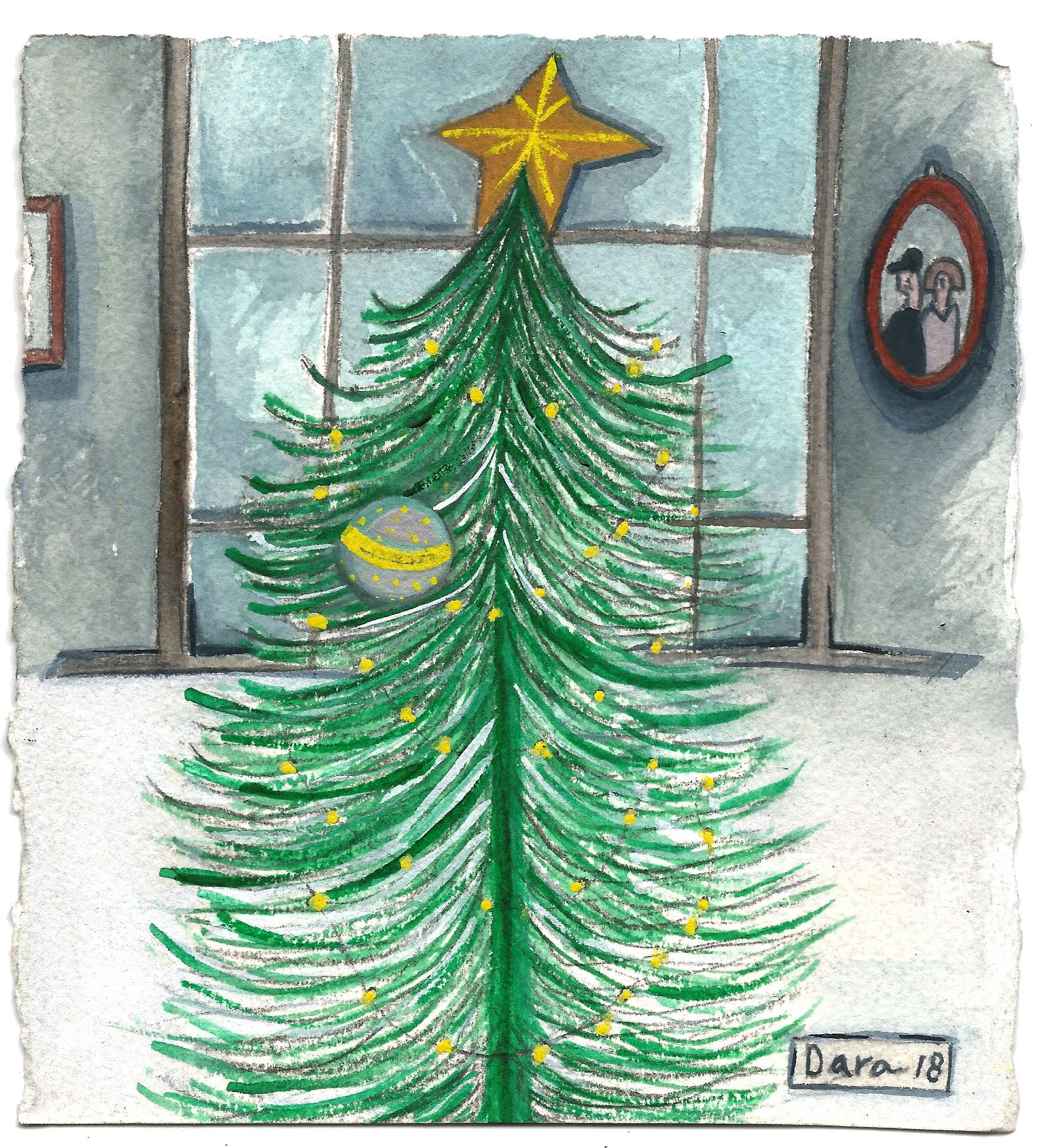In the Parenting Transgender Children support groups I belong to on Facebook, we refer to our previous-gendered child’s birth name as Dead Name.
I lurk in these groups with headings like trigger warnings, suicide, self-harm, and mothers posting about fathers who cut off their male-to-female child’s hair. I don’t tell my story.
Decades prior, in the lounge of a Sheraton Hotel, my now ex-husband and I decided on the names of our future children. The cocktail napkin we wrote them on is in my child’s baby book.
After my first ectopic pregnancy, I was diagnosed with endometriosis. Surgery after surgery followed to rid my fallopian tubes of scar tissue that was blocking my eggs from traveling to my uterus. My chance to conceive before the tissue returned was a three-month window. I took my temperature every morning to track my ovulation cycle, elevated my hips after clinical sex, had acupuncture, and another baby died inside of me.
Each loss was grieved in loneliness. “It wasn’t meant to be,” people told me.
Buses, magazines, billboards, and newspapers inundated me with advertisements of baby-this, baby-that, families everywhere. Grief crowded my every move. I cried in my car. I cried in public washrooms that had change tables. What to Expect When You’re Expecting was a text I could have rewritten for my reality: What to expect when you get your period again and lie on the bathroom floor rocking yourself while weeping? You get ready for work, that’s what to fucking expect.
“You have less than a twenty-five percent chance of having a live birth,” the specialist said. “IVF is your only option. We’ll put you on the waiting list.”
I got naturally pregnant again.
Sweating on the paper sheet of the ultrasound room table, tears welled in my closed eyes. I didn’t want to see the technician’s expressions, or read into them, or watch her head tilt with curiosity, seeking, and then calling the doctor to break me the bad news.
She touched my shoulder. I opened my eyes.
“Can you see this?” she asked, turning the screen towards me.
I screamed with the joy of a child on Christmas morning. I hugged my belly, and said the words, “I love you, I love you, I love you,” rocking the child in my womb.
Many ultrasounds later, we decided to learn the sex of our baby and had the doctor write it down. That evening we unfolded the paper. “Girl,” it said.
I could now call her by the name we had chosen so many years before.
After sixteen hours of unmedicated labor, my daughter came into this world angry, as if she knew the wrong body had been assigned to her.
From the time she could pick out her own clothes, she only wanted boy clothes. On her first birthday party she pitched a fit while I tried to put her in a dress. She got a package of girl shoes and flung them across the room. Everyone laughed, while she sat there not understanding. Figure skating lessons at the age of three brought about her infamous words, “Mommy, I want to do the game with the black skates.” She became a hockey star, better than boys far older than she was.
There were no princess Halloween costumes, no mani-pedi birthday parties. While playing Barbies, she was Ken. Her stuffed animals had male names. She chose the boy toy at McDonald’s and I couldn’t have cared less. She was my child, and I was proud that she didn’t feel the need to conform to the world’s standards and expectations of what a female is supposed to be. She was happy.
And then came puberty. Moodiness, that I expected, became the norm, with outbursts of anger. She refused to shop for bras, and still would only wear boy clothes. My best friend suggested she might be gay. That didn’t seem to fit with what was going on with my once-happy child.
Spring break, 2012. She had gone to a girlfriend’s family cabin. Upon her return, I noticed some scratches on her left forearm.
“What happened here?” I asked her, pointing like the technician.
“We were hiking in the woods and I got scratches from tree branches.”
Later that week, I got a phone call at work from the school guidance counselor. My daughter’s friends told her that she had cut herself.
My world stopped. I looked at my phone in disbelief.
“Cut herself?”
“Yes, I spoke to her myself, and she admitted it,” the counselor said.
This now brought more questions and worry. As a single parent, I had no one to turn to. I found a therapist for her. Her anger became more pronounced to the point that she was punching holes in the walls of her bedroom. She wouldn’t speak to me, and nothing was becoming of her therapy sessions.
On and on it went, more cutting, finding razor blades in her bedroom and gutted pencil sharpeners. If she was in a good mood when I came home from work, it was due to cutting. How, I wondered, could anyone feel so much internal pain that the only solution could be to cause more external pain? I lived in constant fear.
One evening, she came to me asking to talk. She rolled up the sleeve of her sweatshirt and blood was oozing out from her makeshift bandage. I gently removed them, exposing deep cuts. I could see all the way to her muscle. I started crying, begging her to tell me what was going on. “I love you, I love you,” I said, again, rocking her in my arms. She had nothing to say.
I took her to Children’s Hospital in the city. Surely there would be better help there. We were placed in a private room, as her wounds were soaking through towels and causing too many other people distress. Four hours and thirty-five stitches later, they refused to admit her.
“She isn’t suicidal,” the on-call psychiatrist told me.
The scars on her left arm resembled a street map of a busy city.
He gave me the name of a therapist in downtown Vancouver that he highly recommended.
School was over for the summer and I was able to take her twice a week. While she had her sessions, I waited, walking in circles, staring into store windows, only to see myself. What had I done to make this child I loved and wanted so dearly do these things to herself? Another thing not in What to Expect When You’re Expecting.
I was not given information about the therapist’s conversations and I didn’t press the issue. I just let her know that I was there for her. The cutting became less frequent. I felt a glimmer of hope for the first time in months.
End of July, 2012. I woke up to an email from her sent in the early morning.
Mom,
This email is going to cover a lot, so be prepared.
Recently we haven’t been getting along very well, so this might not be the right time, or the right situation, but I’m hoping that this will bring us closer.
I’m ready to open up to you and explain how I’ve been feeling. Why I’ve been so angry, isolated and depressed. Talking with the therapist has helped me.
Before I go further, I want you to understand a few things.
Most people don’t believe that sex and gender are different things, when in fact, they are.
Sex is determined by what genitals you are born with, (also called your biological sex), while on the other hand, gender is what you identify as, what you believe you are, and what you feel like on the inside.
I suffer from dysphoria, specifically, gender dysphoria.
Gender dysphoria is defined as “Unhappiness with one’s biological sex or its usual gender role, with the desire for the body and role of the opposite sex.”
In my own words, dysphoria is a terrible feeling that causes anxiety and suicidal thoughts. It’s when someone feels so out of place within themselves that they can’t look in the mirror and feel the slightest bit of happiness. Everything feels wrong, out of place, and just not right.
I get it every day. It brings me to tears and cutting to take away my pain. But it’s there. I don’t know why, but it is.
Mom, I am transgender.
Relief flooded my body. My questions had been answered. How could I not have seen this, how could I not know? Now I knew, and I embraced my son with the same love in which I had embraced my daughter. He had his hair cut off, all new male clothes, and once again, my child was happy.
We attended Pride celebrations, and found a transgender support group and a doctor specializing in gender reassignment surgery. My son started taking testosterone, legally changed his name, and got a new birth certificate.
Summer was coming to an end. With each passing day, anxiety crept into my life. How could my son, who had left grade nine as a girl, walk into grade ten as a boy? Bullies became my fear. I came up with a half-baked plan that we would move, start over in another community so he could be stealth. It was not to be.
On the first day of school, my new son bravely walked through the doors of the school.
My anxiety became worse. I was unable to sleep, yet during the day I was paralyzed, unable to move. I left my job, put our house up for sale, and started seeing the Vancouver therapist on my own.
“This is common with parents of transgender children,” she told me. “You’re grieving.”
“Grieving?”
What had I lost? Who had died?
“Your daughter,” she said.
Any evidence of her life was gone. My son insisted on removing all signs of his former gender—every picture, every piece of paper of paper with her name on it, had vanished. I sank into the darkness of depression. My friends didn’t understand my grief. How could I grieve someone who was still alive? How can a woman be the same person as a man? Even if it was meant to be from the beginning, did I ever have a daughter?
To this day, I have not once discussed this with my son. I accept my child, regardless of his gender. Even though I accepted the person he once was, perhaps it was I who had placed expectations on a mother-daughter relationship. The thought of sharing a daughter’s pregnancy, sharing the experience of being a mother.
From the beginning of his journey, I have been his biggest supporter. I attend all gender reassignment surgery appointments discussing breast removal and hysterectomy, removing pieces of a person he was never meant to be. We are on this journey together.
This past Christmas, for the first time since my son’s transition, I didn’t cry when I decorated the tree. I didn’t cry when I placed the ornaments made in kindergarten, in grade one, the ones bearing the name that will never be dead to me.
When I talk about my son to people who didn’t know him before his transition, when I tell them how lucky I am to have been able to conceive a child, they compliment me on the originality of his name—the name he chose himself, that I first saw when he signed his email.
“It just came to me,” I tell them.
***
Rumpus original art by Dara Herman Zierlein.








